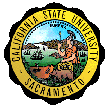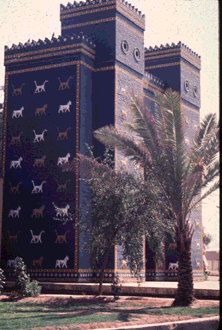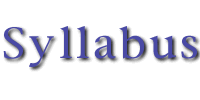

Ancient Near East. Cultural History
History 110
GE C-1: World Civilizations & Writing Intensive Advanced Study Course
Prerequisite: WPE Passing Score
California State University, Sacramento
Professor Henry E. Chambers
Thursday 6:00-8:50 PM
Office Tahoe 3091.
Hours: TR 9-10:00 AM, Noon-12:30.
Office Phone:278-6234
Home Phone: (916) 486-0400.
Catalog Description: The course will study the growth and development of the Ancient Near East from its origin in Ancient Sumer and Egypt to its fruition in the Babylonian, Assyrian, and Egyptian empires. Relgion, literature, social, and political institutions will be emphasized as integral elements in an historical process. Primary interest will be on the internal development of the two great cultural empires, Mesopotamia and Egypt as the foundations of the ancient Mediterranean civilizations and only secondarily on other Levantine peoples.
As an Advanced Study course students will prepare different types of written exercises: two in class exams and three 4-5 page formal essays on the assigned readings and accompanying discussions. Your instructor will provide specific paper topic assignments for the papers.
- Students will read, discuss, and write three short papers on a variety of Near Eastern texts.
- Each student will use computers for emailand accessing course materials.
- Babylonian and Egyptian Literarature will be the central focus for student appreciation of the two cultures.
- Babylonia and Egypt will stressed as the primary historical foundations for Mediterranean culture.
|
Assignment |
|
|
| Essay I - Sumerian Civilization |
|
Oct 4
|
|
Essay II - Babylonian Literature |
|
Oct 18 |
| Essay III - Egyptian Literature |
|
Nov 29 |
| Exam I - Mesopotamia |
|
|
|
Exam II - Egypt |
20% |
Dec 20 |
|
A |
90-100 |
|
|
B |
80-89 |
|
|
C |
70-79 |
|
|
D |
60-69 |
|
|
F |
0-59 |
|
Required:
William Kelly Simpson. ANCIENT EGYPTIAN LITERATURE. 3d Edition. Yale, 2003.
S. Dalley. MYTHS FROM MESOPOTAMIA. Oxford, 1989.
William Stiebing. THE ANCIENT NEAR EAST. Longman, 2003.
|
Agricultural Revolution
|
Readings: Stiebing, pp. 1-25. |
Sept. 6 |
|
Early Dynastic Sumer to Neo-Sumerian Renaissance
|
Readings: Stiebing, pp. 29-61, 65-84, |
Sept 13 |
|
Sumerian and Babylonian Cosmologies
|
Readings: S. Dalley. MYTHS: Descent of Ishtar, 154-162; Nergal and Ereshkigal, 163-201;Anzu, 203-231; Adapa, 182-188; Etana, 189-200. |
Sept. 20 |
|
Old Babylonia: Creation of New Political, Economic, and Social Forms.
|
Readings:. Stiebing, pp. 85-99. Hammurabi's Law Code. |
Sept. 27 |
| Paper I Due |
|
October 4 |
|
Babylonian Literary Norms
|
Readings: Dalley, MYTHS, Epic of Gilgamesh |
October 4 |
|
Babylonian Literature
|
Readings: Dalley, MYTHS, Atrahasis, 1-39; Epic of Creation, 228-277. |
Oct. 11 |
|
Paper II Due |
OCT 18 |
|
|
Assyrian and Neo-Babylonian Traditions
|
|
Oct 18 |
|
EXAM I |
|
Oct. 25 |
|
Old Kingdom Egypt: Political/Social Norms
|
Readings: Stiebing, pp. 103-134, Simpson EGYPTIAN LITERATURE, Tale of Cheops and the Magicians, Teaching of King Amenemhat I for His Son Senwosret, Teaching for King Merikare, Three Autobiographies of the Old Kingdom. |
Nov. 1 |
|
Foundations of Egyptian Religion
|
Readings: Simpson, Maxims of Ptahhotep; Pyramid Texts, Selections from the Coffin Texts, Book of the Dead 125: "The Negative Confession." |
Nov. 8. |
|
|
. |
|
|
Middle Kingdom
|
Readings: Stiebing, pp. 139-159; Simpson, The Admonitions of an Egyptian Sage, Story of Sinuhe, The Man Who Was Weary of Life, Shipwrecked Sailor, Prophecies of Neferty, Tale of the Eloquent Peasant |
Nov 15. |
|
Thanksgiving November 23 (No class)
Paper III Due |
|
Nov. 29 |
|
Imperial Egypt
|
Readings: Stiebing,pp. 162-178; Simpson, The Kamose Texts, The Poetical Stela of Thutmose III, The Israel Stela
|
Nov 29 |
|
Egyptian Religion and Society
|
Readings: Stiebing, pp. 178-190; Simpson, Hymns to Amun and Aton, Love Songs and the Songs of the Harper. |
December 6 |
|
Conclusion of the Ancient Near East
|
Readings: Stiebing, pp. 225-227, 293-320, 323-328. |
Dec 13, |
| Exam II | Final Exam Dec 20 |
Assignments:
1. Three papers, 4-5 pages in length. The first two may be redone for a second and higher grade. Paper assignments will be on specific topics provided by the instructor. Cribbing information or worse still, direct quotes without citation violates University policy and will not be tolerated.
2. Two Examinations, essay and short answer in format. Each exam will require one essay from a selection of two (50 pts) and ten short answers (50 pts) from fifteen available. Study questions will be provided for both examinations..
Computer Requirements:
- Each student must have a saclink account from CSUS.
- The course uses WebCt, a proprietary web site. Students must have access to a computer either at home or in campus labs and be able to use a web browser. Netscape works well for web access. Individual passwords and access numbers are your saclink number and the final four digits of the student ID number. Class notes, exam study questions, assignments, and email are available on the class WebCt site.
